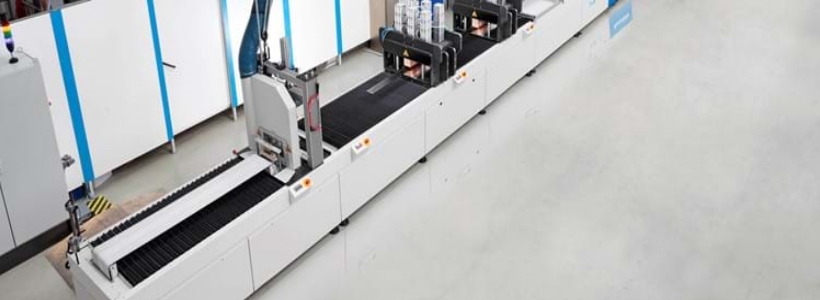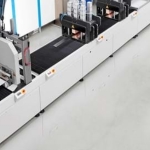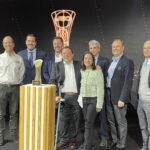Together with the first pultrusion system of the TechCentre – an iPul system for flat sections – KraussMaffei now offers its customers a research environment to develop and test new processes and applications in pultrusion. “Pultrusion is a simple way to produce cost-effective profiles, there are hardly any turnkey offers and it is a growth technology,” states Sebastian Schmidhuber, Head of Development for Reaction Process Machinery at KraussMaffei. “In addition, we are knowledgeable about fibres, metering technology and associated process technology.” KraussMaffei entered the pultrusion market a year ago. The result of its recent development work is the iPul system, launched in 2017, which is designed to open up new applications in pultrusion with significantly higher production speeds than the conventional tub or pull-through processes. The second pultrusion system is designed to manufacture pultruded rebar. Pultruded rebar based on epoxy and reinforced with glass or carbon fibre offers an enormous potential in the construction industry. “They are corrosion-resistant compared to classical steel reinforcements,” Schmidhuber explains. “Therefore, the overlaying concrete layers can be considerably thinner.” Further advantages include the low weight and consequently cheaper transport, the easier handling at the construction site and the fact that the composite rebar can be produced endlessly and wound onto drums at the end of the pultrusion system. Typical application areas are in infrastructure, for example, in bridges or in road construction or in environments susceptible to corrosion in buildings.”The classic production speeds for rebar in the conventional tub or pull-through processes are still at relatively low haul-off speeds, in some cases under 0.5 m/min,” Schmidhuber reports. “With the new iPul system, we are aiming at up to six times faster speeds in our TechCentre and therefore offer a cost-effective alternative to conventional steel reinforcements.” In pultrusion, continuous fibres, usually of glass, carbon or aramid, are infiltrated with a reactive plastic matrix and formed to the desired profile in a heated mould. Grippers pull the cured profile continuously and feed it to a sawing unit. The new iPul system by KraussMaffei encapsulates the soaking of the fibres, which so far mostly takes place in open tubs, in an injection box, which permits the use of fast-reacting systems (epoxy, polyurethane). It is reported to increase the production speed from the usual 0.5-1.5 m/min to approximately 3 m/min.













